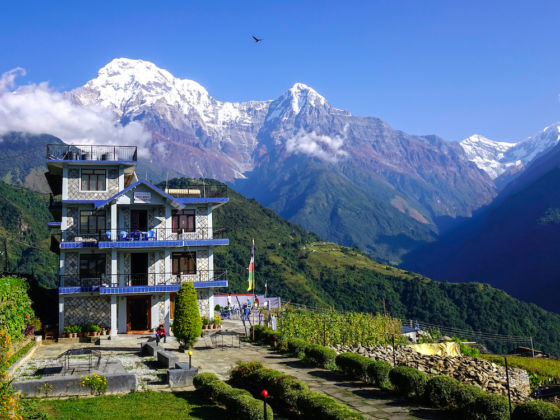After a year of penny-pinching, my partner and I launched a year-long travel sabbatical. First stop — Nepal. We’d been talking about trekking the Annapurna Sanctuary for months, and we planned to do it alone, with no guide or porter.
What follows is the route we took, where we slept and ate along the way, the items we packed, and some general tips for taking on one of the world’s best treks.
